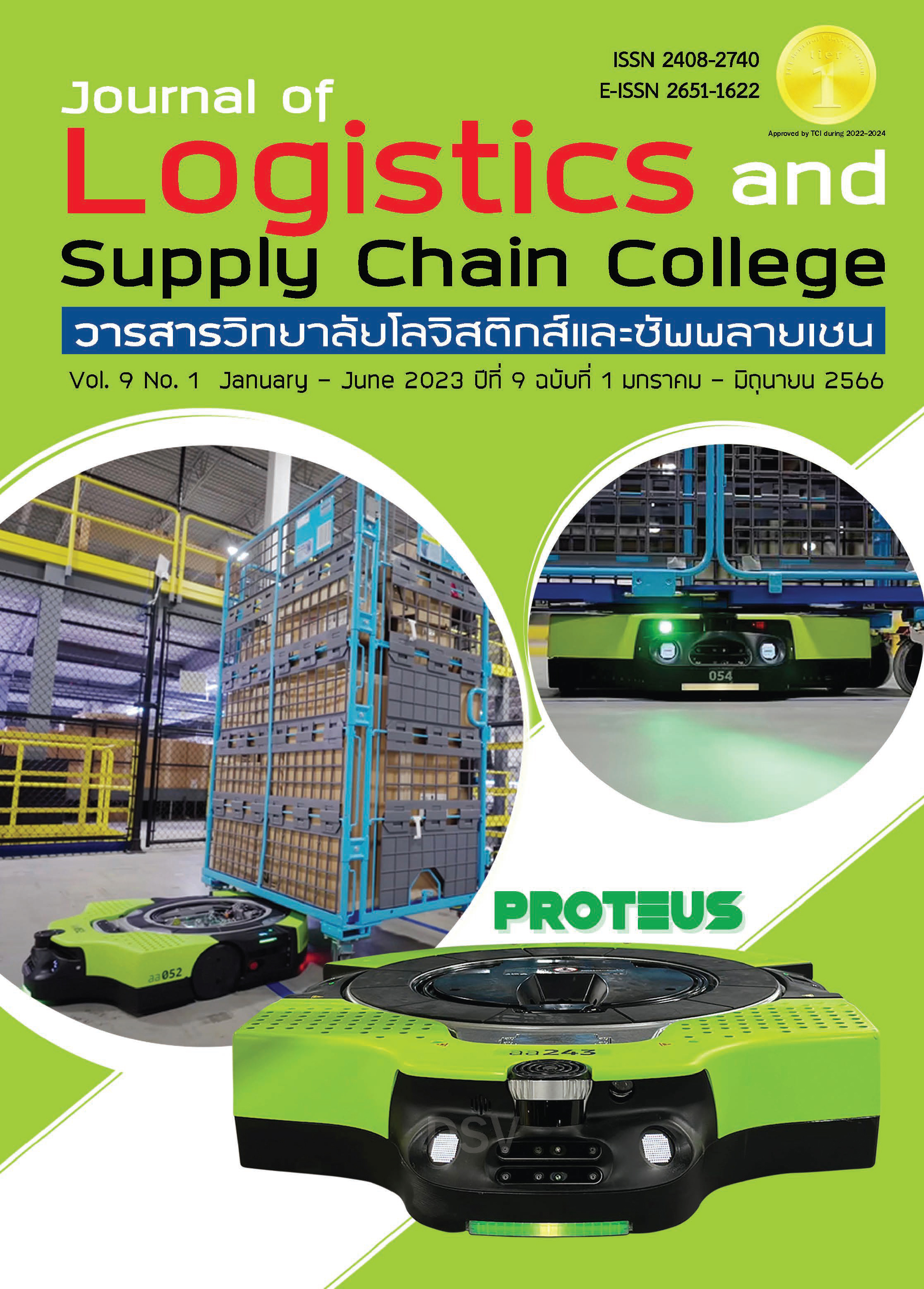การประเมินการจัดการศึกษาการจัดการธุรกิจค้าปลีก ภายใต้แนวคิด การจัดการเรียนการสอนแบบบูรณาการการเรียนการสอนกับการทำงาน ของมหาวิทยาลัยราชภัฏหมู่บ้านจอมบึง
คำสำคัญ:
การจัดการธุรกิจค้าปลีก, การจัดการเรียนการสอนแบบบูรณาการการเรียนกับการทำงาน, การประเมินบทคัดย่อ
การศึกษาครั้งนี้มีวัตถุประสงค์เพื่อ 1) ศึกษานโยบาย วัตถุประสงค์ เป้าหมาย และระบบกลไกที่สร้างขึ้นเพื่อดำเนินโครงการ 2) ศึกษาสภาพการดำเนินการโครงการ รวมทั้งปัญหา อุปสรรคของการดำเนินโครงการ 3) ศึกษาผลการบรรลุวัตถุประสงค์และเป้าหมายจากการดำเนินการที่ผ่านมา และ 4) ให้ข้อเสนอแนะแนวทางการปรับปรุงหรือพัฒนาการดำเนินโครงการ เป็นการวิจัยเชิงคุณภาพ โดยใช้แบบสัมภาษณ์กึ่งโครงสร้างเป็นเครื่องมือหลักในการเก็บข้อมูลจากผู้มีส่วนได้ส่วนเสียกับโครงการจำนวน 106 ราย อาศัยการสัมภาษณ์เชิงลึก การสนทนากลุ่มและการสังเกต เพื่อตรวจสอบสามเส้าด้านข้อมูล และวิเคราะห์ข้อมูลด้วยการวิเคราะห์เนื้อหา ผลการศึกษาพบว่า 1) โครงการนี้เป็นโครงการที่จัดตั้งขึ้นในปี พ.ศ. 2559 ภายใต้ความร่วมมือระหว่างมหาวิทยาลัย ราชภัฏหมู่บ้านจอมบึง กับบริษัท ซีพี ออลล์ จำกัด (มหาชน) โดยมีจุดประสงค์เพื่อส่งเสริมให้ผู้เรียนบริหารจัดการเนื้อหาที่เรียนเข้ากับการทำงานในสถานที่จริง 2) โครงการนี้ได้นำแนวทางการเรียนการสอนแบบ WIL มาเป็นแนวทางหลักในการจัดการศึกษาโดยมีจำนวนนักศึกษาเข้าโครงการทั้งสิ้น 125 คน พบปัญหาและอุปสรรคทั้งในส่วนนำเข้า กระบวนการ และผลผลิตในการดำเนินโครงการ 3) การบรรลุวัตถุประสงค์ของโครงการพบว่า นักศึกษาที่เข้าร่วมโครงการจะมีรายได้ระหว่างเรียน และได้รับการบรรจุงานเมื่อสำเร็จการศึกษา ทั้งนี้โครงการมีเป้าหมายในการพัฒนาบุคลากรร่วมกันผ่านกิจกรรมทั้งจากสถาบันและสถานประกอบการ 4) ข้อเสนอแนะเพื่อพัฒนาโครงการได้แก่ (1) ต้องพัฒนากลยุทธ์เพื่อเพิ่มจำนวนนักศึกษารับเข้า (2) ต้องลดอัตราการลาออกระหว่างเรียนของนักศึกษา (3) ควรมีการประชุมระหว่างผู้ที่เกี่ยวข้องเพื่อรับรู้และแก้ไขปัญหาได้ทันเวลา (4) ควรปรับปรุงระบบการประเมินผลสมรรถนะของนักศึกษา
References
Billett, S. (2009). Realising the educational worth of integrating work experiences in higher education. Studies in Higher Education, 34(7), 827-843.
Billett, S. (2010). Learning through practice: models, traditions, orientations and approaches, New York: Springer.
Calway, B. A. (2006). What has Work-Integrated Learning Learned? A Grounded Study toward a WIL Philosophy. Retrieved 12 June 2021, From: http://www.centreforefs.com/resources/b_calway_2006.pdf.
Campbell, M. & Zegwaard, K.E. (2011). Values, ethics and empowering the self through cooperative education. Asia-Pacific Journal of Cooperative Education, 12(3), 205-216.
Dewey, J. (1986). Experience and education: Taylor & Francis Group. The educational forum. 50(3), 241-252.
Eames, C., & Coll, R. K. (2010). Cooperative education: Integrating classroom and workplace learning. In Learning through practice. Dordrecht: Springer.
Griffith University (2006). Introduction to Work Integrated Learning (WIL). Retrieved 15 August 2021, From: http://www3.griffith.edu.au/01/ocp/content.php?id=501.
Knowles, M. (1975). Self-Directed Learning – A Guide for Learners and Teachers., New York: Association Press.
Kuzel, A. J. (1999). Sampling in qualitative inquiry. In B. F. Crabtree & M. B. Miles (Eds.), Doing qualitative research (2nd ed.). Thousand Oaks, CA: Sage Publications.
Lave, J. (1996). Teaching, as learning, in practice. Mind, culture, and activity, 3(3), 149-164.
Marshall, B., Cardon, P., Poddar, A., & Fontenot, R. (2013). Does sample size matter in qualitative research? A review of qualitative interviews in IS research. Journal of Computer Information Systems, 54, 11- 22. doi:10.1080/08874417.2013.11645667
Morse, J. M. (2000). Determining sample size. Qualitative Health Research, 10, 3–5. doi: 10.1177/104973200129118183.
Owen, J. M. (2006). Program evaluation: Forms and approaches. Routledge.
Pope, C., Van Royen, P., & Baker, R. (2002). Qualitative methods in research on healthcare quality. BMJ Quality & Safety, 11(2), 148-152.
Power, B., & Hubbard, R. (1999). Becoming teacher researchers one moment at a time. Language Arts, 77(1), 34-39.
Revans, R. W. (1991). Action learning and the third world. International Journal of Human Resource Management, 2(1), 73-91.
Ricks, F. (1996). Principles for structuring cooperative education programs, Journal of Cooperative Education and Internship, 31(2-3), 8-22.
Sedmak, J. (2021). What is Stakeholder Engagement, and Why is it Important for Strategic Planning?. Retrieved 12 June 2021, From: https://www.smestrategy.net/blog/stakeholder-engagement-management-for-strategic-planning.
Van Gyn, G. (1994). The Education Orientation of Cooperative Education: A Critical Variable in Effectiveness, Journal of Cooperative Education and Internship, 30(1), 17-25.
Van Gyn, G. (1996). Reflective Practice: The needs of professions and the promise of cooperative education, Journal of Cooperative Education and Internship, 31(2-3), 103-132.
Zegwaard, K. E., & Rowe, A. D. (2019). Research-informed curriculum and advancing innovative practices in work-integrated learning. International Journal of Work-Integrated Learning, 20(4), 323–334.


